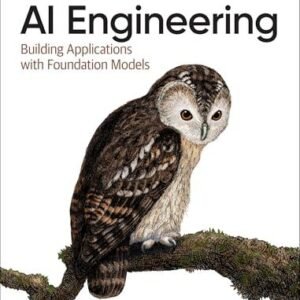: A Journey Through Time
The world of artificial intelligence (AI) is often seen as a cutting-edge domain, filled with innovations that push the boundaries of technology and redefine our understanding of machines. However, to truly appreciate the sophisticated algorithms and models that power today’s AI systems, we must first embark on a journey through history—a journey that highlights the pioneering efforts of researchers whose visions laid the groundwork for the advancements we enjoy now. In this article, we will trace the evolution of early AI algorithms and models, exploring how foundational concepts have transformed over the decades. From the nascent stages of machine learning in the mid-20th century to the emergence of neural networks, we will uncover the pivotal moments and influential figures that shaped this fascinating field. Join us as we delve into the integral developments that have propelled artificial intelligence from theoretical musings to the daily applications we now rely on, enriching our understanding of both the challenges and triumphs that have marked its evolution.
Table of Contents
- Understanding the Foundations of Early AI Algorithms
- The Impact of Early Models on Modern AI Development
- Lessons Learned from Historical AI Failures and Successes
- Future Directions: Incorporating Historical Insights into Contemporary AI Research
- Final Thoughts
Understanding the Foundations of Early AI Algorithms
The foundations of early AI algorithms were built on seminal ideas that shaped the trajectory of artificial intelligence as we know it today. At the core of these algorithms were mathematical and logical principles that aimed to simulate human reasoning and decision-making. Pioneers like Alan Turing and John McCarthy laid the groundwork for computational theories and practical applications, prompting the development of systems that could solve problems, learn from experience, and even exhibit rudimentary forms of intuition. Some key concepts from this era include:
- Decision trees: Structured models used for classification and decision-making.
- Neural networks: Early models inspired by the human brain, designed to recognize patterns.
- Search algorithms: Methods for navigating through potential solutions to find the most optimal one.
As capabilities grew, so too did the complexity of these algorithms. The introduction of symbolic AI heralded significant advancements, integrating various fields such as linguistics and psychology to create more sophisticated models. Researchers developed heuristic methods to enhance problem-solving efficiency, as evidenced by the rise of techniques like:
| Technique | Description |
|---|---|
| Genetic algorithms | Inspired by the process of natural selection, optimizing solutions through iterative improvements. |
| Expert systems | AI that emulates the decision-making ability of a human expert within a certain domain. |
These foundational advancements not only influenced later developments in AI but also set the stage for modern machine learning and deep learning paradigms. As researchers continued to refine these early concepts, they paved the way for powerful AI applications that we leverage today, illustrating the profound legacy of early algorithmic innovation.
The Impact of Early Models on Modern AI Development
The foundation of modern artificial intelligence owes much to the pioneering algorithms and models of the early days. These initial frameworks demonstrated the feasibility of machine learning and laid the groundwork for the sophisticated systems we see today. Among the most influential models were:
- Perceptrons: The earliest form of neural networks, which sparked interest in computational learning.
- Decision Trees: Simple yet powerful for classification tasks, they continue to influence ensemble methods.
- Expert Systems: Rule-based systems that mimicked human decision-making, setting the stage for future AI solutions.
The advancements these models achieved, especially in natural language processing and classification, served as a springboard for contemporary AI designs. The iterative improvements over the years, including deep learning and reinforcement learning techniques, can trace their lineage back to these early experiments. The following table summarizes some key models and their modern equivalents:
| Early Model | Key Contribution | Modern Equivalent |
|---|---|---|
| Perceptron | Binary classifiers using linear decision boundaries | Deep Neural Networks |
| Decision Trees | Hierarchical decision making for classification | Random Forests, Gradient Boosting |
| Expert Systems | Knowledge representation and reasoning | Knowledge Graphs, Cognitive Agents |
Lessons Learned from Historical AI Failures and Successes
Throughout the history of artificial intelligence, both failures and triumphs have played a crucial role in shaping the technology we use today. One notable lesson from early AI endeavors is the importance of setting realistic expectations. The ambitious goals set during the initial stages often led to disillusionment, as systems did not perform as anticipated. This phenomenon, sometimes referred to as “AI winter,” serves as a reminder that incremental progress, rather than dramatic breakthroughs, is typically more sustainable.
In contrast, examining successful projects highlights the value of interdisciplinary collaboration and incremental learning. For example, projects like IBM’s Deep Blue and Google’s AlphaGo demonstrated that leveraging expertise across domains — from mathematics to psychology — significantly enhances the effectiveness of AI models. Key takeaways from these successes include:
- Fostering collaboration between AI developers and domain experts.
- Emphasizing data quality over quantity, ensuring that models are trained on relevant and representative datasets.
- Investing in robust evaluation metrics to gauge performance accurately and enhance model robustness.
Furthermore, analyzing these historical moments reveals a clear trend: adaptability is vital in the rapid evolution of AI technologies. As algorithms became more sophisticated, the ability to pivot and incorporate feedback from both successes and failures proved invaluable. The integration of ethical considerations and public awareness, particularly in the wake of failures associated with biased algorithms, underscores the necessity for responsible AI development. Early AI models serve as a foundation, but their lessons continue to resonate, ensuring that future innovations are born from a rich understanding of history.
Future Directions: Incorporating Historical Insights into Contemporary AI Research
As the field of artificial intelligence continues to evolve rapidly, recognizing the contributions and limitations of early algorithms can inform modern research in significant ways. By revisiting concepts from foundational models and understanding their historical contexts, contemporary AI practitioners can appreciate the breakthroughs achieved in the past that paved the way for today’s advancements. This retrospection allows researchers to identify enduring principles, such as the significance of simplicity and interpretability, that can still enhance the robustness and transparency of current AI systems.
Moreover, interdisciplinary approaches that integrate insights from philosophy, cognitive science, and computational theory could yield innovative methodologies for tackling contemporary challenges. For instance, lessons learned from early decision trees can influence modern machine learning techniques, while the exploration of early neural network architectures encourages the reconsideration of trained models. A collaborative framework that synthesizes historical knowledge with current technological capabilities can foster new avenues for research aimed at addressing ethical, societal, and technological dilemmas facing modern AI.
Final Thoughts
As we conclude our exploration of the early algorithms and models that laid the groundwork for today’s sophisticated artificial intelligence systems, it becomes clear that the journey of AI has been as much about human ingenuity as it has been about technological advancements. From the rudimentary programs of the 1950s to the complex neural networks that define modern AI, each evolution reflects a relentless quest for innovation and understanding.
By tracing the historical milestones, we not only gain insight into the challenges and breakthroughs that shaped the field but also appreciate the visionaries who dared to imagine an intelligent future. As we stand on the shoulders of these giants, it’s vital to remember that the algorithms of yesterday continue to influence the trajectory of AI today.
Looking ahead, it’s exciting to ponder what the next chapter will hold. With rapid advancements in machine learning, deep learning, and beyond, we are on the cusp of a new era in AI. Understanding our past equips us with the perspective needed to navigate its future responsibly and ethically.
Thank you for joining us on this retrospective journey through the evolution of early AI. We encourage you to keep the conversation going—what do you think the future holds for this fascinating field?





